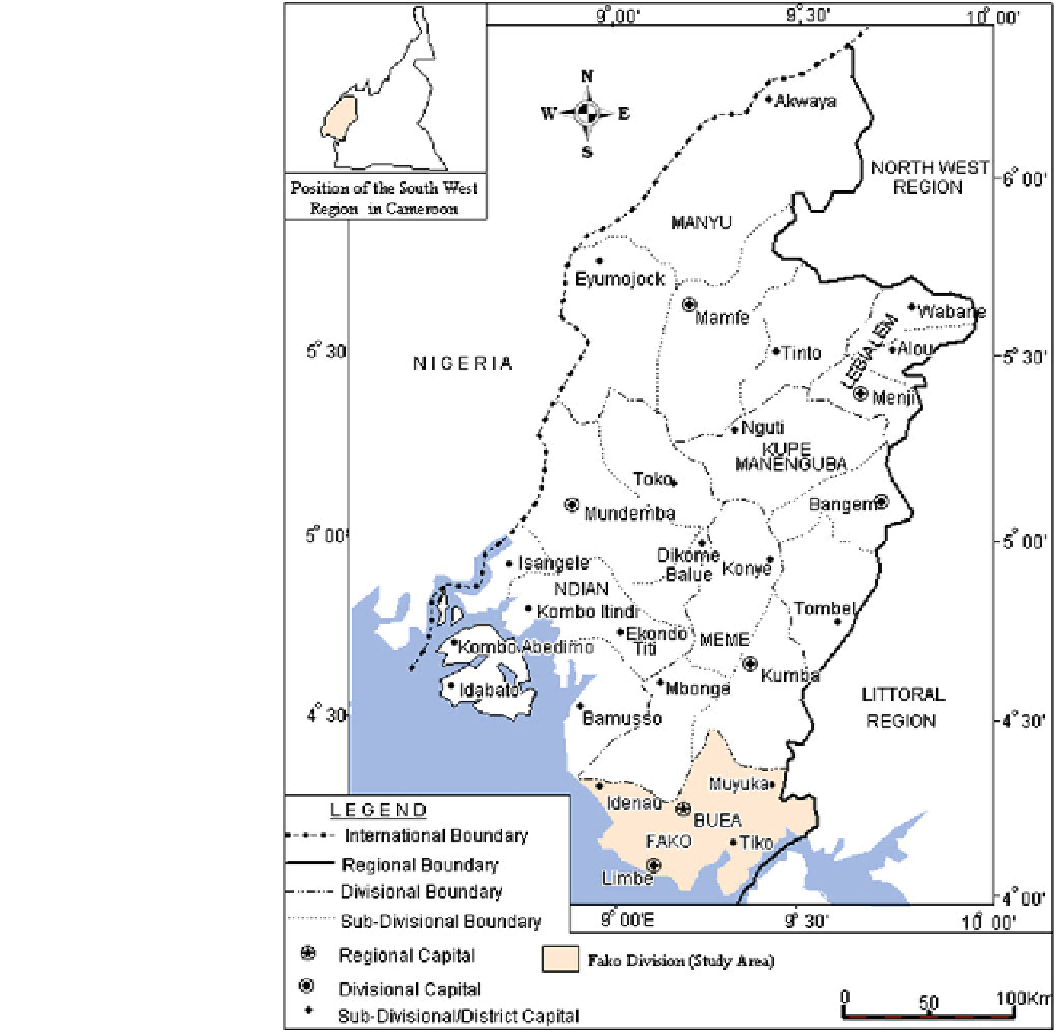Environmental Engineering Reference
In-Depth Information
Fig. 1
Map of the south-west
region showing the study area
and Dibamba rivers. To the west of the estuary are the
slopes
Overview of Plantation Agriculture in Cameroon
of
Mount
Cameroon
covered
with
banana
plantations.
Agriculture is the mainstay of the Cameroon economy.
Pesticides are not regulated and also contribute to pollution.
Pesticides that have long been banned elsewhere are still in
use. The growing population is increasing production of
export crops such as coffee, cocoa, bananas and palm oil,
using imported pesticides and fertilizers. Typically fertil-
izers contain urea, ammonia and phosphorus. Pesticides
applied are mostly DDT and other derivatives of organo-
halogens (Sama
1996
).
Plantation agriculture managed by the CDC is an important
economic activity in south-western Cameroon, employing
over 15,856 workers and contributing significantly to the
national economy. The 2002 statistics of the Consultative
Group for International Agricultural Research (CGIAR)
estimates that agriculture accounts for 43 % of the GDP of
the area. Rubber and banana have been grown in the forest
zone of south-western Cameroon for close to a century (CDC
Reports). Plantation agriculture began in the south-western
region of Cameroon in 1885, when the two leading German

Search WWH ::

Custom Search